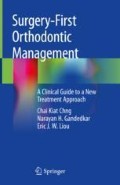Abstract
The chapter discusses the pre- and post-surgery patient care checklist and instructions for patients as it is imperative that any procedure carried out should be aimed at delivering a maximum positive impact whilst ensuring utmost safety with no catastrophic complications. Patient care checklist not only provides an opportunity to comprehensively evaluate or identify the patient’s conditions but also assists in appropriate referrals of healthcare professionals for timely management of a deteriorating state. Patient dos and don’ts instruction chart not only provides an invaluable aid in equipping the patient and care givers in providing comprehensive care but also lends appropriate education which proliferate the patients power of autonomy. Also, the aim of dos and don’ts is to improve outcome by providing the patient with a comprehensive information on pre- and postoperative instructions.
Checklists seem to provide a protection against such failures. They remind us of the minimum necessary steps and make them explicit. They not only offer the possibility of verification, but also instill a kind of discipline of higher performance.
—Atul Gawande, The Checklist Manifesto
Access this chapter
Tax calculation will be finalised at checkout
Purchases are for personal use only
References
Akhtar A, MacFarlane RJ, Waseem M. Suppl 3: pre-operative assessment and post-operative care in elective shoulder surgery. Open Orthop J. 2013;7:316.
Garcia-Miguel F, Serrano-Aguilar P, Lopez-Bastida J. Preoperative assessment. Lancet. 2003;362(9397):1749–57.
Arnold MJ, Beer J. Preoperative evaluation: a time-saving algorithm: our preop evaluation method combines the latest guidelines and tools to help you avoid unnecessary testing and complete the process in one visit. J Fam Pract. 2016;65(10):702–10.
Kaplan EB, Sheiner LB, Boeckmann AJ, Roizen MF, Beal SL, Cohen SN, et al. The usefulness of preoperative laboratory screening. JAMA. 1985;253(24):3576–81.
Macario A, Roizen M, Thisted R, Kim S, Orkin F, Phelps C. Reassessment of preoperative laboratory testing has changed the test-ordering patterns of physicians. Surg Gynecol Obstet. 1992;175(6):539–47.
Velanovich V. The value of routine preoperative laboratory testing in predicting postoperative complications: a multivariate analysis. Surgery. 1991;109(3 Pt 1):236–43.
Al-Bitar ZB, Al-Ahmad HT. Anxiety and post-traumatic stress symptoms in orthognathic surgery patients. Eur J Orthod. 2016;39(1):92–7.
Bertolini F, Russo V, Sansebastiano G. Pre-and postsurgical psycho-emotional aspects of the orthognathic surgery patient. Int J Adult Orthodon Orthognath Surg. 2000;15(1):16–23.
Sarwer DB, Crerand CE. Psychological issues in patient outcomes. Facial Plast Surg. 2002;18(02):125–34.
Carroll DH, Scahill L, Phillips KA. Current concepts in body dysmorphic disorder. Arch Psychiatr Nurs. 2002;16(2):72–9.
Pavan C, Simonato P, Marini M, Mazzoleni F, Pavan L, Vindigni V. Psychopathologic aspects of body dysmorphic disorder: a literature review. Aesthet Plast Surg. 2008;32(3):473–84.
Phillips KA. Quality of life for patients with body dysmorphic disorder. J Nerv Ment Dis. 2000;188(3):170–5.
Looper KJ, Kirmayer LJ. Behavioral medicine approaches to somatoform disorders. J Consult Clin Psychol. 2002;70(3):810.
Mitchinson AR, Kim HM, Geisser M, Rosenberg JM, Hinshaw DB. Social connectedness and patient recovery after major operations. J Am Coll Surg. 2008;206(2):292–300.
Everhart JS, Best TM, Flanigan DC. Psychological predictors of anterior cruciate ligament reconstruction outcomes: a systematic review. Knee Surg Sports Traumatol Arthrosc. 2015;23(3):752–62.
Bhamrah G, Ahmad S, NiMhurchadha S. Internet discussion forums, an information and support resource for orthognathic patients. Am J Orthod Dentofac Orthop. 2015;147(1):89–96.
Kendell BD, Fonseca RJ, Lee M. Postoperative nutritional supplementation for the orthognathic surgery patient. J Oral Maxillofac Surg. 1982;40(4):205–13.
Worrall S. Changes in weight and body composition after orthognathic surgery and jaw fractures: a comparison of miniplates and intermaxillary fixation. Br J Oral Maxillofac Surg. 1994;32(5):289–92.
Anderson OA, Wearne IMJ. Informed consent for elective surgery—what is best practice? J R Soc Med. 2007;100(2):97–100.
Childers R, Lipsett PA, Pawlik TM. Informed consent and the surgeon. J Am Coll Surg. 2009;208(4):627–34.
Thomas T, Robinson C, Champion D, McKell M, Pell M. Prediction and assessment of the severity of post-operative pain and of satisfaction with management. Pain. 1998;75(2–3):177–85.
Nagatsuka C, Ichinohe T, Kaneko Y. Preemptive effects of a combination of preoperative diclofenac, butorphanol, and lidocaine on postoperative pain management following orthognathic surgery. Anesth Prog. 2000;47(4):119.
Sato J, Goto J, Harahashi A, Murata T, Hata H, Yamazaki Y, et al. Oral health care reduces the risk of postoperative surgical site infection in inpatients with oral squamous cell carcinoma. Support Care Cancer. 2011;19(3):409–16.
Takai S, Kuriyama T, Yanagisawa M, Nakagawa K, Karasawa T. Incidence and bacteriology of bacteremia associated with various oral and maxillofacial surgical procedures. Oral Surg Oral Med Oral Pathol Oral Radiol Endod. 2005;99(3):292–8.
Yoneyama T, Yoshida M, Matsui T, Sasaki H. Oral care and pneumonia. Lancet. 1999;354(9177):515.
Author information
Authors and Affiliations
Rights and permissions
Copyright information
© 2019 Springer Nature Switzerland AG
About this chapter
Cite this chapter
Chng, C.K., Gandedkar, N.H., Liou, E.J.W. (2019). Pre- and Post-surgery Patient Care Checklist and Patient Instruction. In: Surgery-First Orthodontic Management. Springer, Cham. https://doi.org/10.1007/978-3-030-18696-8_11
Download citation
DOI: https://doi.org/10.1007/978-3-030-18696-8_11
Published:
Publisher Name: Springer, Cham
Print ISBN: 978-3-030-18695-1
Online ISBN: 978-3-030-18696-8
eBook Packages: MedicineMedicine (R0)

